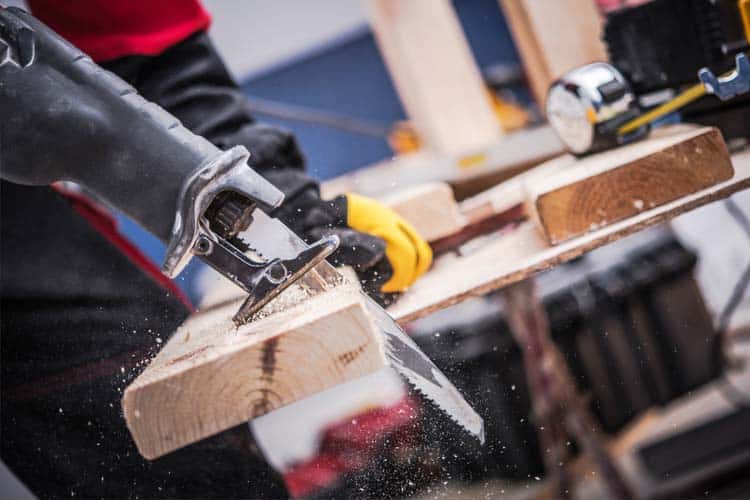An air saw, also known as an air body, saw or pneumatic saw, is a versatile and powerful tool that can be used for various cutting tasks. Whether you are a professional mechanic, a DIY enthusiast, or a hobbyist, an air saw can be your best friend when it comes to cutting through various materials with ease and precision. However, to get the most out of your air saw, you need to know some essential tips and tricks. In this article, we will discuss the best practices for using, maintaining, and getting the most out of your air saw.
Understanding the Basics of an Air Saw
An air saw is a pneumatic tool that uses compressed air to power a reciprocating saw blade. This makes it an ideal tool for cutting through various materials such as metal, plastic, and wood. Some of the advantages of using an air saw include:
- Lightweight and compact design
- Low vibration and noise level
- Precise and clean cuts
- Suitable for tight spaces and intricate cuts
Before using your air saw, make sure you are familiar with its features and functions. Read the user manual carefully and follow the manufacturer’s recommendations for proper use and maintenance.
Choosing the Right Air Saw Blades
Using the right air saw blades is crucial for achieving clean and precise cuts. Air saw blades come in various lengths, widths, and tooth configurations, depending on the material you are cutting and the desired finish.
- For cutting metal, choose a blade with a high tooth count (18-32 teeth per inch) and a bi-metal construction for durability and heat resistance.
- For cutting wood, use a blade with a lower tooth count (10-14 teeth per inch) and a high carbon steel construction for flexibility and fast cutting.
- For cutting plastic, choose a blade with a medium tooth count (14-18 teeth per inch) and a high carbon steel construction for smooth and clean cuts.
Always use sharp blades and replace them as soon as they become dull or damaged to ensure optimal performance and safety.
Proper Air Saw Maintenance
Regular maintenance is essential to keep your air saw in top working condition. Follow these maintenance tips to prolong the life of your air saw:
- Clean the air saw after each use, removing any debris from the blade and the air vents.
- Lubricate the moving parts with a few drops of pneumatic tool oil daily or as recommended by the manufacturer.
- Inspect the air hose and fittings for wear and tear and replace them if necessary.
- Check the air saw blades for sharpness and replace them when needed.
- Store your air saw in a clean, dry place when not in use.
Tips for Using Your Air Saw Safely
Safety should always be a priority when using any power tool, including an air saw. Follow these safety tips to prevent accidents and injuries:
- Wear appropriate personal protective equipment, such as safety goggles, gloves, and ear protection.
- Ensure your work area is well-lit and free of clutter and debris.
- Use a stable and secure work surface to prevent slipping or movement while cutting.
- Hold the air saw firmly with both hands and maintain proper balance while cutting.
- Keep your fingers away from the blade and the cutting area.
- Do not force the air saw through the material; let the blade do the work.
Air Saw Tips and Tricks for Different Materials
Different materials require different techniques and approaches when using an air saw. Here are some tips and tricks for cutting various materials:
- Metal: Use a slow cutting speed and apply cutting oil to the blade to reduce heat and friction. Make a pilot hole to guide the blade and prevent it from wandering.
- Wood: Use a faster cutting speed and a blade with fewer teeth for faster cutting. Use a straight edge or a guide to ensure straight cuts.
- Plastic: Use a medium cutting speed and a blade with more teeth for cleaner cuts. Apply masking tape to the cutting area to prevent chipping and cracking.
Troubleshooting Common Air Saw Problems
Like any power tool, an air saw may encounter issues from time to time. Here are some common problems and their solutions:
- Air Saw Not Starting: Check the air supply and ensure it is connected and functioning correctly. Inspect the air hose and fittings for damage or leaks.
- Air Saw Losing Power: Clean the air vents and lubricate the moving parts. Check the air supply for adequate pressure and flow.
- Blade Not Cutting Properly: Inspect the blade for sharpness and replace it if necessary. Ensure you are using the correct blade for the material being cut.
- Excessive Vibration or Noise: Tighten any loose screws or bolts on the air saw. Check the blade for damage or wear and replace it if necessary.
Conclusion
An air saw is a versatile and powerful tool that can make quick work of cutting tasks when used correctly. By understanding the basics of an air saw, choosing the right blades, maintaining your tool, and following safety precautions, you can get the most out of your air saw and achieve clean, precise cuts every time. With these tips and tricks in mind, you’ll be well on your way to mastering the art of using an air saw for various cutting tasks. So, go ahead and put your air saw to work, and enjoy the benefits of this fantastic tool.

